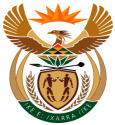
SPEECH BY THE MINISTER OF TRANSPORT, HONOURABLE DULLAR OMAR, AT THE SIGNING OF THE MEMORANDUM OF UNDERSTANDING BETWEEN THE GOVERNMENTS OF THE REPUBLICS OF BOTSWANA, NAMIBIA AND SOUTH AFRICA ON THE DEVELOPMENT AND MANAGEMENT OF THE TRANS-KALAHARI CORRIDOR (TKC)3rd November 2003
Honorable Tebelo Seretse, Minister of Transport in
Botswana, It gives me great pleasure to be here today in the beautiful coastal town of Walvis Bay on this auspicious occasion of the signing of the Memorandum of Understanding between the Governments of the Republics of Botswana, Namibia and South Africa on the Development and management of the Trans-Kalahari corridor. I am sure that my colleague Honorable Minister Amweelo will allow me to indicate that our gathering in Walvis Bay symbolizes the importance of the development of the Trans-Kalahari Corridor and the centrality of the Port of Namibia as a Western Port for inbound/outbound trade with the Americas and Europe. This corridor links Namibia, with Botswana and South Africa by road. In South Africa the Trans-Kalahari Highway links up with the Platinum Highway and the N4 Maputo Corridor to complete the West to East Coast road Highway also known as the Coast to Coast Corridor thereby linking the Ports of Maputo in the East, through South African and Botswana to this Port of Walvis Bay. Indeed the road that we all traversed to get to the signing of this Memorandum of Understanding has almost been as long as the Trans-Kalahari Highway itself. A hallmark of the journey we traversed are the consultations that included a wide range of stakeholders in both the public and private sector of our countries designed and carried out to ensure that the road ahead is traveled and made easier through the partnership between Public and Private Stakeholders and role-players. Indeed, we have had to engage each other in order to reach common understanding on how best to develop and manage the corridor for effective development of our region, encompassing both public and private sector resources and capacity. In this regard, let me pause to acknowledge the efforts of the USAID and other private role players during the initial public and private sector consultation phases towards the development of the MoU and the continued role they will play. Colleagues, Ladies and Gentleman, the Memorandum of Understanding that we are about to sign here today, is based on our countries commitment to the common vision of the New Partnership for Africa’s Development to eradicate poverty and its transport objectives: the implementation of integrated and seamless movement of goods and persons on the Trans-Kalahari Corridor with a view to reduce transportation costs and transit times. Our success in achieving these objectives will assist in increasing the competitiveness in the trade of goods produced in the Southern African Development Community in both regional and international markets.
We have already embarked on processes that will ensure that between the three countries of Botswana, Namibia and South Africa we eliminate delays at border posts by improving customs procedures, joint customs controls and border post management, border post business hours and border post facilities, in short, improving the transport logistics in our region. Our collective commitment and will to improve the transport logistics within the region cannot succeed without effective capacity, institutional and funding arrangements. This MoU provide the regional co-operation framework and the establishment of the Trans-Kalahari Corridor Management Committee that will be responsible for the development and implementation of processes and projects to address the aforementioned challenges in the short, medium and longer-term. The TKCMC represents the needed strategic partnership between our respective governments and private sector stakeholders and role players to enable us to unlock the required resources and expertise in the public and private sectors of our respective countries and international partners in pursuit of building seamless and integrated transport services that supports social and economic development within our countries, the SADC region and beyond. Ladies and gentlemen, we should not forget that the Trans-Kalahari Corridor is not an isolated initiative by the Governments of Botswana, Namibia and South Africa. Together with the Maputo Development Corridor (now completed), the planned Beira Corridor, Dar-es Salaam, Nacala and the North-South corridors. It represents mainly road corridor projects under the auspices of the Southern Africa Development Community (SADC) Protocol on Transport, Communications and Meteorology, the Southern African Customs Union Memorandum of Understanding on Road Transportation whose ultimate objective is to contribute to harmonious, balanced, equitable and sustainable development of the SADC as a building block for our continental NEPAD programme. At the heart of both SADC Protocol and NEPAD transport agenda are the following strategic goals which are common to the development and management of the Trans-Kalahari Corridor:
In conclusion, I am confident that the officials and private sector role-players in our respective countries will be able to carry the responsibility of regional development through the TKCMC in a manner that facilitates poverty reduction, promotes economic development and reduce marginalisation in the region through efficient, seamless, integrated and cost-effective transport infrastructure and services that reduce transport costs and hindrances in cross-country movement of people and goods. Thank you.
|
